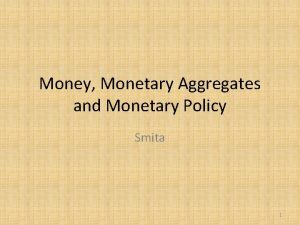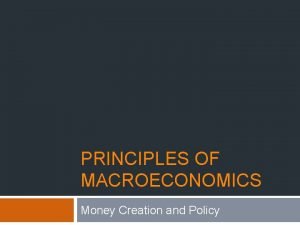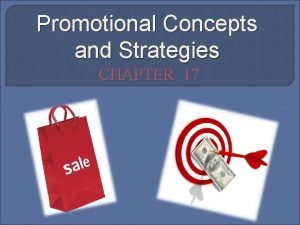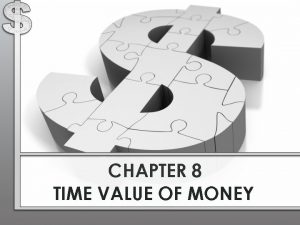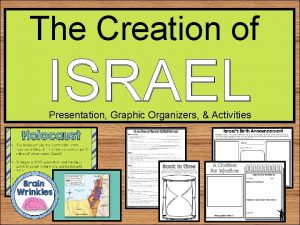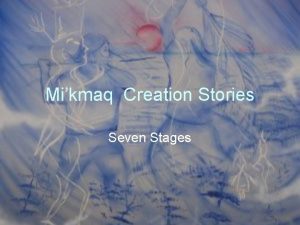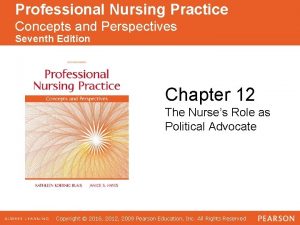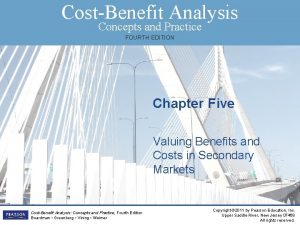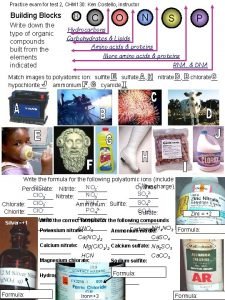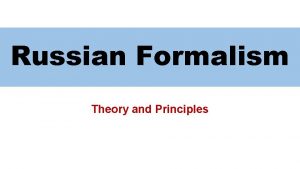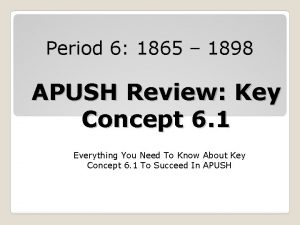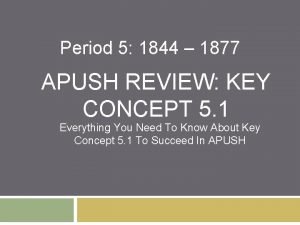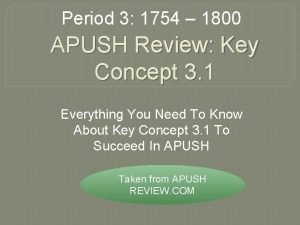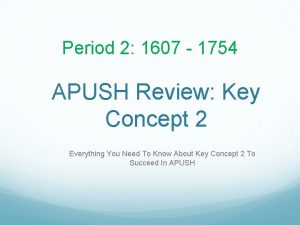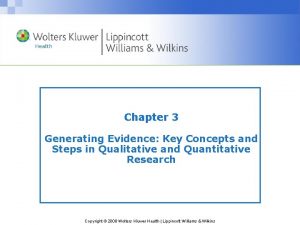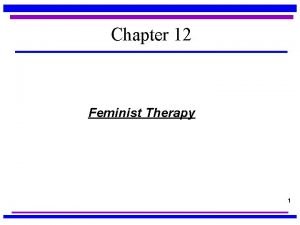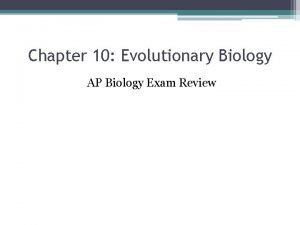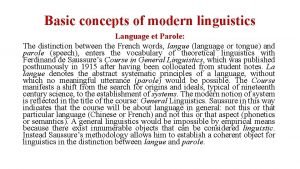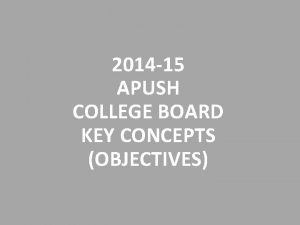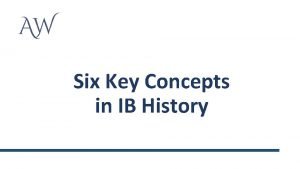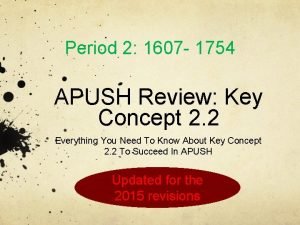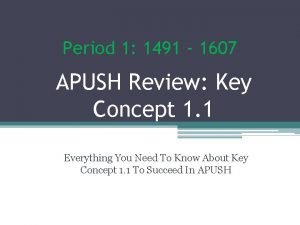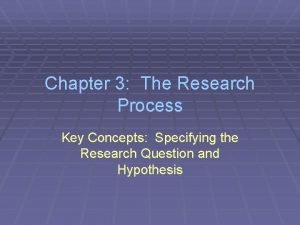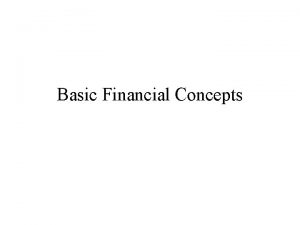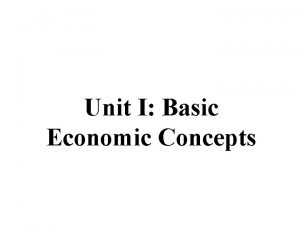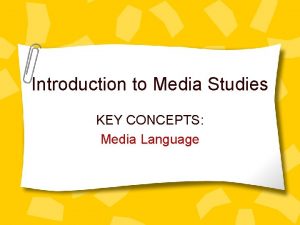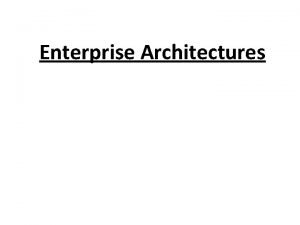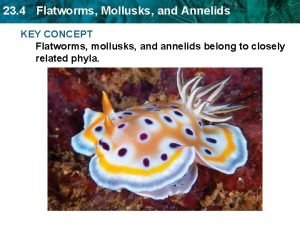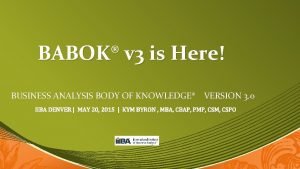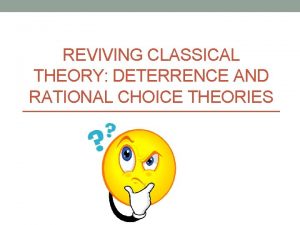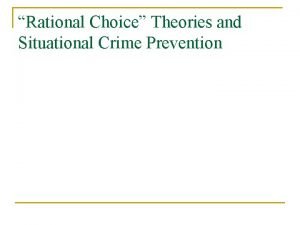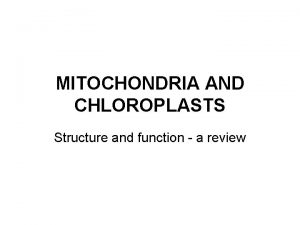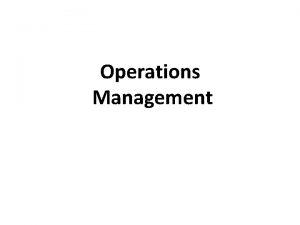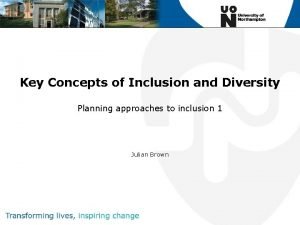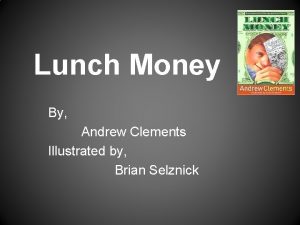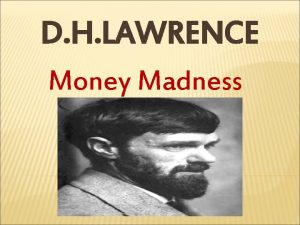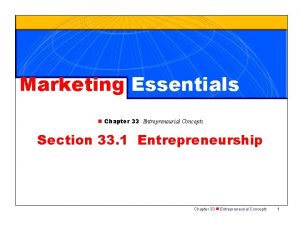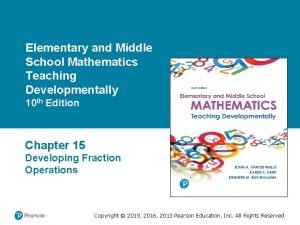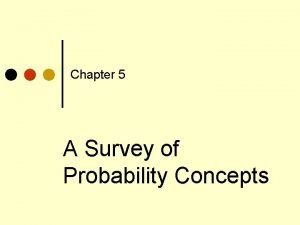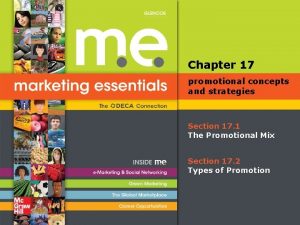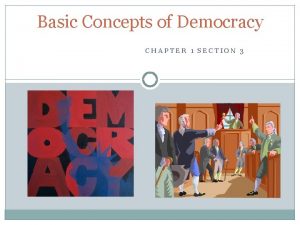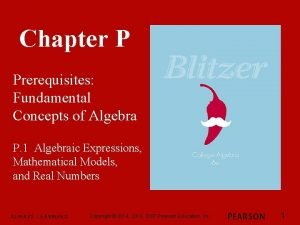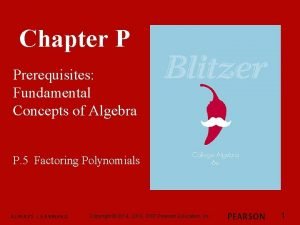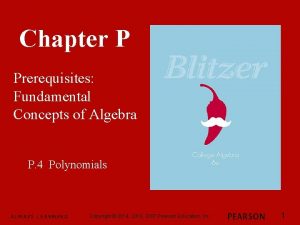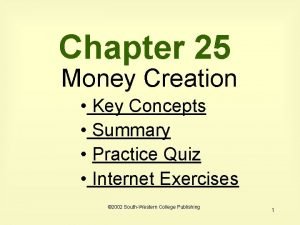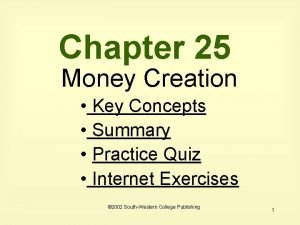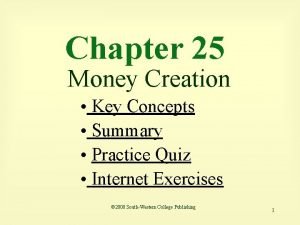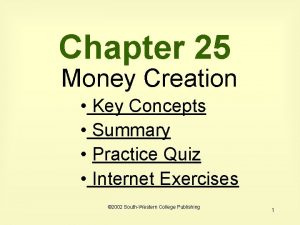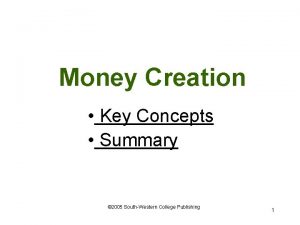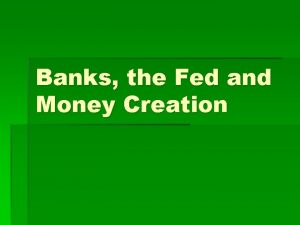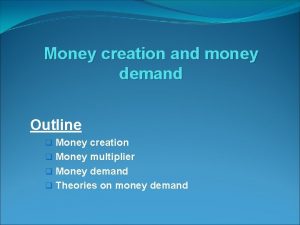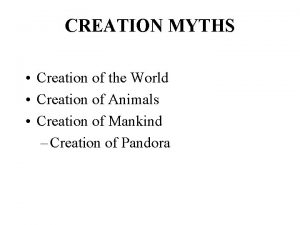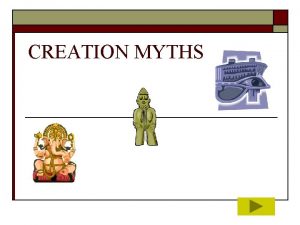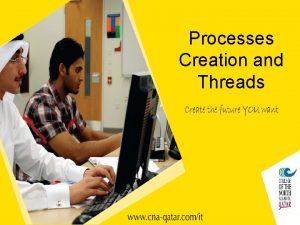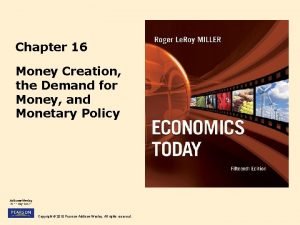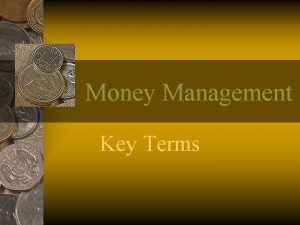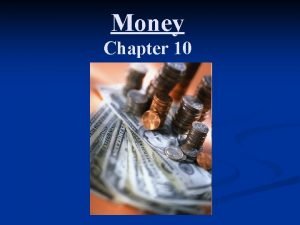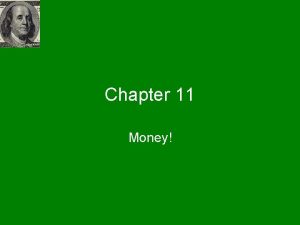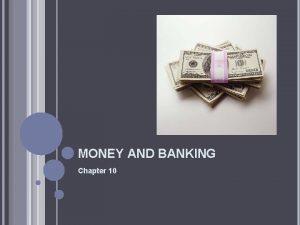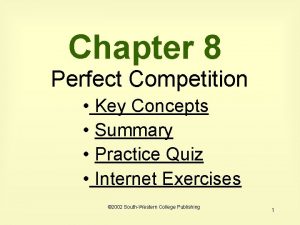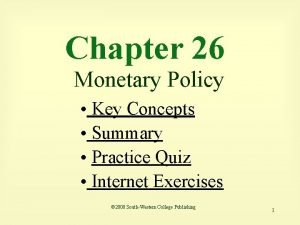Chapter 19 Money Creation Key Concepts Summary Practice





























































- Slides: 61

Chapter 19 Money Creation • Key Concepts • Summary • Practice Quiz © 2004 Thomson/South-Western 1

In the Middle Ages, what was used for money? Gold was the money of choice in most European nations 2

Who were the founders of our modern-day banking? Goldsmiths, people who would keep other people’s gold safe for a service charge 3

What was the first currency? People would use the receipts they received from goldsmiths as paper money 4

How did the early goldsmiths act as the first banks? Some goldsmiths made loans and received interest for more gold than the actual gold held in their vaults 5

What is fractional reserve banking? A system in which banks keep only a percentage of their deposits on reserve as vault cash and deposits at the Fed 6

What are required reserves? The minimum balance that the Fed requires a bank to hold in vault cash or on deposit with the Fed 7

What is a required reserve ratio? The percentage of deposits that the Fed requires a bank to hold in vault cash or on deposit with the Fed 8

What are excess reserves? Potential loan balances held in vault cash or on deposit with the Fed in excess of required reserves 9

Typical Bank - Balance Sheet 1 Assets Required Reserves Excess Reserves Loans Total Liabilities $5 million Checkable $50 million Deposits 0 $45 million $50 million Total $50 million Note: The Fed requires the bank to keep 10% of its checkable deposits in reserve. 10

What are total reserves? Total Reserves = required reserves + excess reserves 11

Required Reserve Ratio of the Fed Type of Deposit Required Reserve Ratio Checkable deposits 0 - $46. 5 million 3% Over $46. 5 million 10% 12

Best National Bank - Balance Sheet 2 Assets Required Reserves Liabilities $10, 000 Brad Rich $100, 000 Account in M 1 0 Excess Reserves +$90, 000 Total $100, 000 Note: The Fed requires the bank to keep 10% of its checkable deposits in reserve. 13

Best National Bank - Balance Sheet 3 Assets Liabilities in M 1 Required $19, 000 Brad Rich $100, 000 Reserves Account Excess $81, 000 Reserves Loans +$90, 000 Total $190, 000 Connie Jones Account Total +$90, 000 $190, 000 Note: The Fed requires the bank to keep 10% of its checkable deposits in reserve. 14

Best National Bank - Balance Sheet 4 Assets Liabilities in M 1 Required $10, 000 Brad Rich $100, 000 Reserves Account Excess Reserves 0 Loans $90, 000 Total $100, 000 Connie Jones Account 0 0 $100, 000 Note: The Fed requires the bank to keep 10% of its checkable deposits in reserve. 15

Yazoo Bank - Balance Sheet 5 Assets Liabilities Required Reserves +$9, 000 Excess Reserves +$81, 000 Total $90, 000 Better Health Span Account +$90, 000 Total $90, 000 Note: The Fed requires the bank to keep 10% of its checkable deposits in reserve. 16

Expansion of the Money Supply # Bank Increase in Required Excess Deposits Reserves 1 Best Nat’l Bank $100, 000 2 Yazoo Nat’l Bank 90, 000 Bank A 3 81, 000 Bank B 4 72, 900 Bank C 5 65, 610 6 59, 049 Bank D 7 Bank E 53, 144 $10, 000 9, 000 8, 100 7, 290 6, 561 5, 905 5, 314 $90, 000 81, 000 72, 900 65, 610 59, 049 53, 144 47, 830 Total all other banks 478, 297 Total increase $1, 000 47, 830 430, 467 $100, 000 $900, 000 17

What is the money multiplier? The maximum change in the money supply due to an initial change in the excess reserves banks hold 18

What is the money multiplier equal to? 1 / required reserve ratio 19

Actual money supply change M 1 = ER x m Initial change in excess reserves Money multiplier 20

Can the multiplier be smaller than indicated? Yes, because of cash leakages and the chance that banks will not use all of their excess reserves to make loans 21

What would the Fed with inflation? Decrease the money supply What would the Fed do with unemployment? Increase the money supply 22

What is monetary policy? The Fed’s use of • open market operations • in discount rate • in required reserve ratio 23

What are open market operations? The buying and selling of government securities by the Federal Reserve System 24

Federal Reserve System - Balance Sheet 6 Assets Government securities Loans to banks Other assets Total Liabilities $600 1 79 $680 Fed notes $628 Deposits 25 Other liabilities and net worth Total 27 $680 25

Federal Reserve Bank - Balance Sheet 7 Initial in M 1 Government $100, 000 Reserves of $100, 000 +$100, 000 Assets securities Liabilities Best Nat’l bank Note: The Fed conducted open market operations in order to increase the money supply by purchasing $100, 000 in government securities. 26

Federal Reserve Bank - Balance Sheet 8 Initial in M 1 Government-$100, 000 Reserves of -$100, 000 Assets securities Liabilities Best Nat’l bank Note: The Fed conducted open market operations in order to decrease the money supply by selling $100, 000 in government securities. 27

Fed $ $ Banks $ $ Fed sells government securities and banks loose reserves Fed buys government securities and banks gain reserves Public 28

What is the discount rate? The interest rate the Fed charges on loans of reserves to banks 29

What would the Fed do if we have inflation? A higher discount rate discourages banks from borrowing reserves and making loans 30

What would the Fed do if we have unemployment? A lower discount rate encourages banks to borrow reserves and make more loans 31

What is the federal funds market? A private market in which banks lend reserves to each other for less than 24 hours 32

What is the federal funds rate? The interest rate banks charge for overnight loans to other banks 33

What would the Fed do if we had inflation? A higher federal funds rate discourages banks from borrowing reserves and making loans 34

What would the Fed do if we had unemployment? A lower federal funds rate encourages banks to borrow reserves and make more loans 35

What is a required reserve requirement? The Fed determines how much a financial institution must keep in reserve as a percentage of its total assets 36

What is the required reserve ratio? That percentage the Fed stipulates that financial institutions must keep in reserve to meet its reserve requirement 37

If the reserve ratio is one tenth, what is the multiplier? 1 1/10 = 10 38

If the reserve ratio is one twentieth, what is the multiplier? 1 1/20 = 20 39

What would the fed do if we had inflation? Increase the reserve ratio What would the fed do if we had unemployment? Decrease the reserve ratio 40

Is changing the reserve ratio a popular monetary tool? No, changing the reserve ratio is considered a heavyhanded approach and is thus infrequently used 41

What are the shortcomings of monetary policy? • Money multiplier inaccuracy • Nonbanks • Which money definition should the Fed control? • Lag effects 42

Key Concepts 43

Key Concepts • Who were the founders of our modern-day banking? • What is fractional reserve banking? • What are required reserves? • What is a required reserve ratio? • What are excess reserves? • What are total reserves? • What is the money multiplier equal to? 44

Key Concepts cont. • • What is monetary policy? What are open market operations? What is the discount rate? What is the federal funds rate? What is a required reserve requirement? What is the required reserve ratio? What are the shortcomings of monetary policy? 45

Summary 46

Fractional reserve banking, the basis of banking today, originated with the goldsmiths in the Middle Ages. 47

Because depository institutions (banks) are not required to keep all their deposits in vault cash or with the Federal Reserve, banks create money by making loans. 48

Required reserves are the minimum balance that the Fed requires a bank to hold in vault cash or on deposit with the Fed. The percentage of deposits that must be held as required reserves is called the required reserve ratio. 49

Excess reserves exist when a bank has more reserves than required. Excess reserves allow a bank to create money by exchanging loans for deposits. Money is reduced when excess reserves are reduced and loans are repaid. 50

The money multiplier is used to calculate the maximum change (positive or negative) in checkable deposits (money supply) due to a change in excess reserves. As a formula: $ multiplier = 1/required reserve ratio. 51

Monetary policy is action taken by the Fed to change the money supply. The Fed uses three basic tools: (1) open market operations (2) changes in the discount rate and (3) changes in the required reserve ratio. 52

Open-market operations are the buying and selling of government securities by the Fed through its trading desk at the New York Federal Reserve Bank. 53

Buying government securities creates extra bank reserves and loans, thereby expanding the money supply. Selling government securities reduces bank reserves and loans, thereby contracting the money supply. 54

Fed $ $ Banks $ $ Fed sells government securities and banks loose reserves Fed buys government securities and banks gain reserves Public 55

Changes in the discount rate occur when the Fed changes the rate of interest it charges on loans of reserves to banks. 56

Dropping the discount rate makes it easier for banks to borrow reserves from the Fed and expands the money supply. 57

Raising the discount rate discourages banks from borrowing reserves from the Fed and contracts the money supply. 58

Changes in the required reserve ratio and the size of the money multiplier are inversely related. Thus, if the Fed decreases the required reserve ratio the money multiplier and money supply increase. If the Fed increases the required reserve ratio the money multiplier and money supply decrease. 59

Monetary policy limitations include the following: (1) The money multiplier can vary (2) Nonbanks, such as insurance companies, finance companies, and Sears, can offer loans and other financial services not directly under the Fed’s control (3) The Fed might control M 1 while the public can shift funds to M 2, M 3, or another money supply definition (4) Time lags occur. 60

END 61
 Dana damian
Dana damian Liquidity adjustment facility
Liquidity adjustment facility Creation of money
Creation of money Chapter 17 promotional concepts and strategies
Chapter 17 promotional concepts and strategies Chapter 8 time value of money answer key
Chapter 8 time value of money answer key Motifs in the great gatsby
Motifs in the great gatsby Money smart money match
Money smart money match Money on money multiple
Money on money multiple The great gatsby historical context
The great gatsby historical context Tom buchanan character traits
Tom buchanan character traits Creation of israel cloze notes 1
Creation of israel cloze notes 1 The creation of israel cloze notes answer key
The creation of israel cloze notes answer key Mi'kmaq creation story summary
Mi'kmaq creation story summary Business model canvas key partners
Business model canvas key partners Contoh bisnis model canvas makanan pdf
Contoh bisnis model canvas makanan pdf 5 levels of prevention leavell and clark
5 levels of prevention leavell and clark Political astuteness in nursing
Political astuteness in nursing Cost-benefit analysis concepts and practice
Cost-benefit analysis concepts and practice Chm 130 chapter 12 practice problems answer key
Chm 130 chapter 12 practice problems answer key Chapter 10 chemical quantities practice problems answer key
Chapter 10 chemical quantities practice problems answer key Russian formalism theory
Russian formalism theory Key concepts examples
Key concepts examples Apush period 6
Apush period 6 Anthony comstock apush
Anthony comstock apush Period 3 apush key concepts
Period 3 apush key concepts Apush key concepts period 2
Apush key concepts period 2 Key concepts of qualitative research
Key concepts of qualitative research Key concepts of feminist therapy
Key concepts of feminist therapy Reviewing key concepts reproductive barriers
Reviewing key concepts reproductive barriers What is langue and parole
What is langue and parole Apush unit 2
Apush unit 2 Apush college board key concepts
Apush college board key concepts Ib history key concepts
Ib history key concepts Apush key concepts period 2
Apush key concepts period 2 Apush key concepts period 1
Apush key concepts period 1 Key concepts in research
Key concepts in research Key concepts of management
Key concepts of management Detente apush
Detente apush Unit 1: basic economic concepts answer key
Unit 1: basic economic concepts answer key Denotes vs connotes
Denotes vs connotes Enterprise architecture key concepts
Enterprise architecture key concepts Spitting in the client's soup example
Spitting in the client's soup example Reviewing key concepts: flatworms, annelids, and roundworms
Reviewing key concepts: flatworms, annelids, and roundworms Business analysis core concept model
Business analysis core concept model Deterrence and rational choice theory
Deterrence and rational choice theory Rational choice theory key concepts
Rational choice theory key concepts What is the function of the chloroplasts
What is the function of the chloroplasts Culturalism
Culturalism Operations management course outline
Operations management course outline Key concepts of diversity
Key concepts of diversity We quail money makes us quail why?
We quail money makes us quail why? Lunch money summary
Lunch money summary Money poem
Money poem Myeplg website
Myeplg website Chapter 33 entrepreneurial concepts
Chapter 33 entrepreneurial concepts Chapter 15 developing fraction concepts
Chapter 15 developing fraction concepts A survey of probability concepts
A survey of probability concepts Promotional concept
Promotional concept What are the five basic concepts of democracy
What are the five basic concepts of democracy Chapter p prerequisites fundamental concepts of algebra
Chapter p prerequisites fundamental concepts of algebra Chapter p prerequisites fundamental concepts of algebra
Chapter p prerequisites fundamental concepts of algebra Chapter p prerequisites
Chapter p prerequisites

